Home> Company News> Spherical Bearing Manual: Best Practices for Longevity and Performance
- AddressTianqiao, Beiyuan District, Jinan,Shandong
- Factory Addresstian qiao,jinan, shandong,China(Mainland)
- Worktime9:00-18:00(Beijing time)
- Phone(Working Time)86 0531-8299 9952
- Fax86 0531 -82990353
Introduction
Overview of Spherical Bearings and Their Importance in Mechanical Systems
Spherical bearings are crucial components in many mechanical systems, providing pivotal motion and the ability to handle misalignment between shafts and housings. Unlike traditional bearings, spherical bearings are designed with an inner ring that rotates inside an outer ring, allowing for angular rotation in various directions. This unique design makes them highly versatile and indispensable in applications requiring smooth and reliable operation under varying conditions.
The primary advantage of spherical bearings lies in their ability to accommodate misalignment, which can occur due to shaft deflection, mounting errors, or structural deformation. This flexibility helps in reducing stress and wear on other components, thus enhancing the overall lifespan and efficiency of mechanical systems. Moreover, spherical bearings are known for their durability and ability to operate under heavy loads and high-speed conditions, making them suitable for industries ranging from automotive and aerospace to construction and heavy machinery.
Purpose of the Manual: To Provide Best Practices for Enhancing Longevity and Performance
The primary goal of this manual is to offer comprehensive guidelines and best practices for maximizing the longevity and performance of spherical bearings. Proper maintenance and usage of spherical bearings are essential to avoid premature failure and costly downtime. This manual aims to equip engineers, technicians, and maintenance personnel with the knowledge and techniques required to optimize the functionality of these bearings.
Key topics covered in this manual include selection criteria, installation procedures, lubrication methods, and troubleshooting common issues. By adhering to the best practices outlined here, users can ensure that their spherical bearings operate efficiently and reliably over an extended period. This manual will also delve into advanced topics such as the impact of environmental factors on bearing performance and innovative technologies enhancing bearing design and application.
In summary, this manual serves as a valuable resource for anyone involved in the selection, installation, and maintenance of spherical bearings. By following the guidelines provided, users can significantly enhance the performance and lifespan of their bearings, ensuring smoother operation and reduced maintenance costs in their mechanical systems.
Understanding Spherical Bearings
Definition and Types of Spherical Bearings
Spherical bearings are precision-engineered mechanical components designed to allow for rotational movement in various directions, accommodating angular misalignments between connected parts. The defining feature of a spherical bearing is its inner ring, which contains a spherical outer surface that fits into a correspondingly shaped outer ring, enabling smooth, multidirectional rotation.
There are several types of spherical bearings, each tailored to specific applications and performance requirements:
Spherical Plain Bearings: These are designed to handle heavy radial and axial loads while allowing for angular misalignment. They are commonly used in applications such as hydraulic cylinders, agricultural machinery, and heavy-duty vehicles.
Spherical Roller Bearings: These bearings are equipped with barrel-shaped rollers and are ideal for heavy load applications. They offer high load-carrying capacity and are used in industries like mining, construction, and material handling.
Rod Ends: Also known as heim joints, these are versatile spherical bearings used in linkage applications where precise alignment and movement are critical, such as in automotive and aerospace systems.
Components and Materials Used in Manufacturing
Spherical bearings are composed of several key components that ensure their functionality and durability:
Inner Ring: This is the rotating part that fits within the outer ring. It typically has a spherical outer surface to allow for angular movement.
Outer Ring: This component houses the inner ring and is usually fixed in place. It has a concave spherical inner surface that matches the outer surface of the inner ring.
Rolling Elements (in spherical roller bearings): These are barrel-shaped rollers that distribute loads evenly and facilitate smooth rotation.
The materials used in the manufacturing of spherical bearings are chosen for their strength, durability, and resistance to wear and corrosion. Common materials include:
Steel: High-carbon chrome steel is often used for the rings and rolling elements due to its hardness and wear resistance.
Brass or Bronze: These materials are sometimes used for cages or retainers, providing good strength and resistance to deformation.
Stainless Steel: For applications requiring corrosion resistance, such as in marine or chemical environments, stainless steel is used.
Plastic or Composite Materials: These are used in applications where low weight and resistance to corrosion are more critical than high load capacity.
Common Applications Across Industries
Spherical bearings find applications across a wide range of industries due to their ability to handle misalignment and provide smooth rotational motion under varying loads and conditions:
|
Industry |
Applications |
Benefits of Spherical Bearings |
|
Automotive |
Suspension systems, steering linkages, driveline components |
Ensures smooth operation and alignment |
|
Aerospace |
Control surfaces, landing gear, high-stress components |
Provides reliability and precision |
|
Industrial Machinery |
Conveyor systems, crushers, heavy machinery |
Accommodates misalignment, reduces stress on components |
|
Agriculture |
Tractors, combines, harvesters |
Handles heavy loads and rough operating conditions |
|
Construction |
Cranes, excavators, heavy equipment |
Manages high loads and ensures operational stability |
By understanding the different types, components, materials, and applications of spherical bearings, users can better select and utilize these essential components to enhance the performance and longevity of their mechanical systems.

Factors Influencing Longevity and Performance
Importance of Proper Installation Techniques
The longevity and performance of spherical bearings are highly dependent on correct installation techniques. Improper installation can lead to misalignment, excessive wear, and premature failure of the bearings. Ensuring that spherical bearings are installed correctly involves several key steps:
Accurate Alignment: Proper alignment during installation is critical to prevent uneven load distribution, which can cause undue stress on the bearing components. Tools like dial indicators and laser alignment systems can help achieve precise alignment.
Correct Fit: Ensuring the bearing fits properly within the housing and on the shaft is essential. Bearings that are too tight or too loose can lead to operational issues. It is important to follow the manufacturer's recommendations for tolerances and fits.
Handling and Cleanliness: During installation, it is crucial to handle spherical bearings with care and maintain a clean environment. Contaminants such as dirt, dust, and moisture can damage the bearing surfaces and reduce their lifespan.
Effects of Environmental Factors on Bearing Performance
Environmental factors play a significant role in the performance and longevity of spherical bearings. Understanding and mitigating these effects can greatly enhance bearing life:
Temperature: Extreme temperatures can affect the material properties of spherical bearings. High temperatures can cause expansion and increased wear, while low temperatures can lead to brittleness. Using bearings designed for specific temperature ranges and proper lubrication can mitigate these effects.
Moisture and Corrosion: Exposure to moisture can lead to corrosion, which deteriorates the bearing surfaces and reduces efficiency. Sealed or shielded bearings and corrosion-resistant materials such as stainless steel can help protect against moisture damage.
Contaminants: Dust, dirt, and other contaminants can enter the bearing and cause abrasion and increased wear. Utilizing appropriate seals and regularly cleaning the bearing environment can help prevent contamination.
Impact of Regular Maintenance and Lubrication Schedules
Regular maintenance and proper lubrication are critical to ensuring the optimal performance and longevity of spherical bearings. Maintenance schedules should be based on the operating conditions and manufacturer's recommendations:
Lubrication: Proper lubrication reduces friction, wear, and heat generation. Choosing the right lubricant and applying it at the correct intervals is essential. Grease and oil are commonly used lubricants, each with specific advantages depending on the application.
Inspection: Routine inspection of spherical bearings can identify early signs of wear, misalignment, or contamination. Regularly checking for abnormal noises, vibrations, or temperature changes can prevent unexpected failures.
Replacement: Knowing when to replace spherical bearings is as important as maintenance. Bearings have a finite lifespan, and timely replacement prevents catastrophic failures that can lead to costly downtime and repairs.
By focusing on proper installation techniques, understanding the effects of environmental factors, and maintaining a consistent maintenance and lubrication schedule, users can significantly enhance the performance and extend the lifespan of spherical bearings. These best practices ensure that the bearings operate smoothly and reliably, contributing to the overall efficiency and longevity of mechanical systems.
Best Practices for Installation
Step-by-Step Guide to Proper Spherical Bearing Installation
Proper installation of spherical bearings is crucial to ensure their longevity and optimal performance. The following step-by-step guide outlines the best practices for installing spherical bearings:
|
Step |
Description |
|
|
Preparation |
Clean the housing and shaft to remove debris, dust, and contaminants. Ensure components are free of corrosion and damage. |
|
|
Inspect the Bearing |
Inspect the spherical bearing for damage or defects. Check for proper lubrication and ensure the bearing is in good condition. |
|
|
Align the Shaft and Housing |
Use alignment tools like dial indicators or laser alignment systems to ensure the shaft and housing are correctly aligned. |
|
|
Mount the Bearing on the Shaft |
Carefully place the spherical bearing onto the shaft. Apply even pressure using a bearing installation tool or a press to ensure proper seating. |
|
|
Install the Bearing into the Housing |
Insert the bearing into the housing with even pressure, ensuring it is properly seated. |
|
|
Secure the Bearing |
Secure the spherical bearing using the appropriate locking mechanism, such as set screws, locking collars, or adhesive. |
|
|
Check Alignment and Adjust if Necessary |
Recheck the alignment of the bearing and adjust if necessary to ensure even load distribution and prevent excessive wear. |
|
Tools and Equipment Required for Installation
Having the right tools and equipment is essential for the correct installation of spherical bearings. The following tools are commonly used in the installation process:
Bearing Installation Tool: A specialized tool designed to apply even pressure during bearing installation.
Press or Hydraulic Press: Used to apply controlled force when mounting bearings onto shafts.
Dial Indicator: Measures alignment and ensures the shaft and housing are correctly positioned.
Laser Alignment System: Provides precise alignment for more complex installations.
Torque Wrench: Ensures bolts and locking mechanisms are tightened to the manufacturer's specifications.
Cleaning Solvents: Used to clean the shaft, housing, and bearing surfaces before installation.
Lubricants: Appropriate grease or oil for initial lubrication of the bearing.
Common Installation Mistakes and How to Avoid Them
Avoiding common installation mistakes is vital to ensure the longevity and performance of spherical bearings. Here are some typical errors and how to prevent them:
Improper Alignment: Misalignment can cause uneven load distribution and premature wear. Always use alignment tools to ensure correct positioning.
Contamination: Dirt, dust, and debris can enter the bearing during installation, leading to increased wear and failure. Keep the installation area clean and use proper cleaning techniques.
Incorrect Fit: Bearings that are too tight or too loose can cause operational issues. Follow the manufacturer's guidelines for fits and tolerances.
Insufficient Lubrication: Lack of proper lubrication can lead to increased friction and wear. Always apply the recommended lubricant before installation and ensure ongoing lubrication as per the maintenance schedule.
Using Improper Tools: Using makeshift tools can damage the bearing and affect its performance. Always use the correct tools and equipment designed for bearing installation.
By following these best practices for installation, including the step-by-step guide, using the proper tools and equipment, and avoiding common mistakes, you can ensure the optimal performance and extended lifespan of your spherical bearings. Proper installation is the foundation for reliable and efficient bearing operation, contributing to the overall success of your mechanical systems.

Maintenance Strategies for Extended Longevity
Importance of Routine Inspection and Monitoring
Regular inspection and monitoring are critical to maintaining the longevity and performance of spherical bearings. Routine checks help identify early signs of wear, misalignment, or other issues that could lead to bearing failure if left unaddressed. Implementing a structured inspection schedule ensures that spherical bearings are operating under optimal conditions, thereby extending their service life.
During inspections, look for signs of abnormal wear, corrosion, and lubrication issues. Pay attention to unusual noises, vibrations, or increased operating temperatures, as these can indicate underlying problems. By addressing these issues promptly, you can prevent more severe damage and costly downtime.
Lubrication Techniques for Optimal Performance
Proper lubrication is essential for the smooth operation and longevity of spherical bearings. The right lubrication technique reduces friction, minimizes wear, and protects against corrosion and contamination. Here are some key lubrication practices:
Select the Right Lubricant: Use lubricants specifically designed for spherical bearings. The choice of lubricant depends on factors such as load, speed, temperature, and environmental conditions. Common lubricants include grease and oil.
Regular Lubrication Intervals: Establish a regular lubrication schedule based on the manufacturer's recommendations and operating conditions. Regular lubrication ensures a consistent film of lubricant, reducing friction and wear.
Proper Application: Apply lubricant evenly and in the correct amount. Over-lubrication can lead to excess heat and contamination, while under-lubrication can cause increased friction and wear. Use tools like grease guns or automatic lubricators for precise application.
Monitoring Lubricant Condition: Regularly check the condition of the lubricant. Look for signs of contamination, such as dirt or metal particles, and replace the lubricant if necessary. Contaminated lubricant can accelerate wear and lead to premature bearing failure.
Troubleshooting Common Issues and Maintenance Tips
Even with proper maintenance, spherical bearings can encounter issues. Understanding how to troubleshoot common problems can help maintain bearing performance and extend their lifespan. Here are some common issues and maintenance tips:
Excessive Wear: Excessive wear can be caused by improper lubrication, misalignment, or overloading. Ensure proper lubrication and alignment, and avoid exceeding the bearing's load capacity.
Noise and Vibration: Unusual noises or vibrations can indicate misalignment, contamination, or bearing damage. Inspect the bearing and surrounding components, clean any contaminants, and ensure correct alignment.
High Operating Temperatures: Elevated temperatures can result from inadequate lubrication, excessive load, or poor ventilation. Check lubrication levels, reduce load if possible, and ensure proper ventilation around the bearing.
Corrosion: Corrosion can occur due to moisture, chemicals, or improper storage. Use corrosion-resistant materials and protective coatings, and store bearings in a dry, clean environment.
Misalignment: Misalignment can cause uneven load distribution and premature wear. Use alignment tools to ensure proper installation and regularly check alignment during maintenance.
By implementing these maintenance strategies, you can significantly extend the longevity and performance of spherical bearings. Regular inspections, proper lubrication, and effective troubleshooting are key to ensuring reliable operation and preventing unexpected failures.
Enhancing Performance through Advanced Techniques
Advanced Technologies in Spherical Bearing Design
Spherical bearings have evolved significantly with advancements in technology, enhancing their performance and application scope. Modern innovations in spherical bearing design focus on improving precision, reliability, and load handling capabilities. Here are some of the key advanced technologies:
Material Science Innovations: The development of advanced materials, such as high-performance composites and ceramics, has improved the mechanical properties of spherical bearings. These materials offer superior strength, reduced friction, and increased resistance to environmental factors like corrosion and high temperatures.
Precision Manufacturing: Advances in manufacturing technologies, such as CNC machining and additive manufacturing, have enabled the production of spherical bearings with tighter tolerances and improved surface finishes. This precision enhances the overall performance and longevity of the bearings.
Surface Treatments: Advanced surface treatments, such as ion nitriding and coating technologies, provide additional protection against wear, corrosion, and contamination. These treatments extend the service life of spherical bearings and improve their operational efficiency.
Integrated Sensors: The integration of sensors into spherical bearings allows for real-time monitoring of parameters like temperature, vibration, and load. This data enables predictive maintenance and proactive adjustments, enhancing the performance and reliability of the bearings.
Innovations Improving Load Capacity and Durability
Recent innovations in spherical bearings have focused on enhancing load capacity and durability, addressing the increasing demands of modern applications:
|
Innovation |
Description |
Benefits |
|
Enhanced Load Ratings |
Advances in material technology and design optimization for higher load ratings. |
Supports greater loads while maintaining performance and reliability. |
|
Improved Lubrication Systems |
Development of self-lubricating systems and high-performance lubricants. |
Ensures consistent lubrication under extreme conditions, enhancing load-bearing capacity and lifespan. |
|
Thermal Management |
Use of heat-resistant materials and cooling technologies to manage high operating temperatures. |
Prevents overheating, ensuring stable performance in demanding environments. |
|
Sealing Technologies |
Advanced seals like labyrinth seals and high-performance elastomers to protect from contaminants. |
Extends bearing life and maintains performance in harsh conditions by preventing contamination and moisture ingress. |
Case Studies Highlighting Successful Performance Enhancements
Examining real-world applications of spherical bearings can provide insights into the benefits of advanced techniques and innovations. Here are a few case studies illustrating successful performance enhancements:
Aerospace Industry
In the aerospace sector, spherical bearings with advanced ceramic materials and integrated sensors were implemented in landing gear systems. These bearings demonstrated improved load capacity and reliability, significantly reducing maintenance intervals and enhancing overall safety.
Heavy Machinery
For a major construction equipment manufacturer, spherical bearings with enhanced lubrication systems and sealing technologies were used in excavators and cranes. The innovations led to a marked increase in load capacity and durability, resulting in lower operational costs and increased uptime.
Automotive Sector
In the automotive industry, spherical bearings with improved thermal management and advanced surface treatments were employed in suspension systems. These bearings exhibited superior performance under high temperatures and heavy loads, contributing to enhanced vehicle handling and longevity.
By leveraging advanced technologies, innovations in design, and real-world applications, the performance of spherical bearings can be significantly enhanced. These improvements contribute to better load handling, increased durability, and overall operational efficiency.

Safety Considerations and Compliance
Safety Protocols During Installation and Maintenance
When working with spherical bearings, adhering to safety protocols during installation and maintenance is crucial to prevent accidents and ensure optimal performance. Here are key safety practices to follow:
Personal Protective Equipment (PPE): Always wear appropriate PPE, such as safety glasses, gloves, and steel-toed boots, to protect yourself from potential hazards like sharp edges, heavy components, and moving parts.
Proper Handling Techniques: Handle spherical bearings with care to avoid damaging the components or causing injury. Use correct lifting techniques and appropriate tools to prevent mishandling and ensure the bearings are not dropped or subjected to excessive force.
Workspace Preparation: Ensure the workspace is clean, well-lit, and free from obstructions. Organize tools and equipment to prevent tripping hazards and facilitate smooth installation and maintenance processes.
Use of Correct Tools: Employ the proper tools for installation and maintenance of spherical bearings. For instance, use bearing installation tools or presses designed to handle the specific size and type of bearing. Avoid makeshift solutions that could lead to equipment damage or personal injury.
Training and Procedures: Ensure that personnel involved in the installation and maintenance of spherical bearings are adequately trained. Follow established procedures and manufacturer guidelines to prevent errors and ensure safety.
Regulatory Compliance and Standards for Bearing Operation
Spherical bearings must comply with various regulatory standards and guidelines to ensure safe and effective operation. Adhering to these regulations not only helps in achieving high performance but also ensures legal compliance and safety. Key standards include:
ISO Standards: International Organization for Standardization (ISO) provides guidelines for bearing design, performance, and testing. For example, ISO 281 specifies the life rating of rolling bearings, including spherical bearings. Compliance with these standards ensures the bearings meet global quality and performance expectations.
ANSI Standards: The American National Standards Institute (ANSI) sets standards for industrial components, including bearings. ANSI standards cover dimensions, tolerances, and quality requirements for spherical bearings.
DIN Standards: The German Institute for Standardization (DIN) offers specifications for various bearing types, including spherical bearings. DIN standards ensure that bearings meet specific performance and quality criteria.
Regulatory Agencies: Depending on the region, different regulatory agencies may have specific requirements for bearing operation. For instance, in the United States, compliance with Occupational Safety and Health Administration (OSHA) regulations is essential for workplace safety.
Ensuring Workplace Safety and Operational Reliability
To ensure safety and operational reliability when using spherical bearings, implement the following practices:
Regular Safety Audits: Conduct regular safety audits to identify and address potential hazards in the workspace. This includes checking for proper installation practices, safe handling techniques, and adherence to regulatory standards.
Maintenance Records: Maintain detailed records of all installation, maintenance, and inspection activities. This documentation helps in tracking performance, identifying recurring issues, and ensuring compliance with safety standards.
Emergency Procedures: Develop and communicate emergency procedures to handle potential accidents or failures. Ensure all personnel are familiar with these procedures and know how to respond to emergencies involving spherical bearings.
Operational Monitoring: Implement systems for monitoring the performance of spherical bearings in real-time. Regular monitoring helps in early detection of issues and prevents unexpected failures, contributing to overall safety and reliability.
Continuous Training: Provide ongoing training for staff on the latest safety practices, regulatory updates, and technological advancements related to spherical bearings. This ensures that employees are up-to-date with current standards and best practices.
By following these safety protocols and ensuring regulatory compliance, you can enhance the safety, reliability, and performance of spherical bearings in various applications. Proper adherence to these guidelines helps in maintaining a safe working environment and achieving optimal operational efficiency.
Future Trends in Spherical Bearing Technology
Predicted Advancements in Bearing Materials and Designs
The future of spherical bearing technology is poised for significant advancements driven by innovations in materials and design. These improvements are expected to enhance performance, durability, and efficiency across various applications:
Advanced Materials: Future developments in spherical bearings will likely focus on the use of advanced materials such as high-performance composites and ceramics. These materials offer superior resistance to wear, corrosion, and high temperatures compared to traditional steel or bronze bearings. For instance, the incorporation of self-lubricating composites could reduce maintenance needs and extend bearing life.
Improved Coatings: Advances in coating technologies, such as plasma nitriding and diamond-like carbon (DLC) coatings, are expected to enhance the surface properties of spherical bearings. These coatings can improve hardness, reduce friction, and provide better protection against environmental factors, leading to increased longevity and reliability.
Innovative Designs: Future spherical bearing designs will likely incorporate features such as integrated sensors for real-time monitoring of performance parameters like temperature and load. These smart bearings will facilitate predictive maintenance, reducing downtime and extending operational life.
Enhanced Lubrication Systems: Innovations in lubrication technology, including automated lubrication systems and advanced grease formulations, will further enhance the performance of spherical bearings. These systems will ensure optimal lubrication under varying operational conditions, reducing friction and wear.
Emerging Applications and Industries Adopting Spherical Bearings
As technology evolves, spherical bearings are finding new applications across diverse industries, reflecting their versatility and adaptability:
Electric Vehicles (EVs): With the rise of electric vehicles, spherical bearings are being increasingly used in EV drivetrains and suspension systems. Their ability to handle high loads and accommodate misalignment is crucial for the performance of EVs, where precision and reliability are essential.
Renewable Energy: In renewable energy sectors, such as wind and solar power, spherical bearings are becoming integral to the operation of turbines and solar trackers. Their capacity to handle dynamic loads and environmental stresses makes them ideal for these applications.
Medical Devices: The medical industry is adopting spherical bearings for high-precision equipment such as surgical robots and diagnostic imaging systems. Their smooth operation and reliability are critical in ensuring the performance and safety of medical devices.
Aerospace Innovations: Advanced aerospace applications, including spacecraft and satellites, are leveraging spherical bearings for their ability to perform under extreme conditions. Future developments will focus on enhancing their performance in space environments.
Potential Challenges and Opportunities in the Evolving Market
As the market for spherical bearings evolves, several challenges and opportunities will shape the future landscape:
Challenges:
Cost of Advanced Materials: While advanced materials offer numerous benefits, their high cost can be a barrier to widespread adoption. Manufacturers will need to balance performance improvements with cost considerations.
Complexity of Design: Incorporating advanced features such as sensors and automated lubrication systems increases the complexity of spherical bearings. This complexity can pose challenges in manufacturing, maintenance, and integration.
Regulatory Compliance: As new applications emerge, ensuring compliance with industry-specific regulations and standards becomes crucial. Manufacturers will need to stay updated on regulatory changes and adapt their products accordingly.
Opportunities:
Growing Demand in Emerging Markets: The expanding adoption of spherical bearings in emerging markets, such as electric vehicles and renewable energy, presents significant growth opportunities for manufacturers. Companies that can innovate and adapt to these new applications will likely gain a competitive edge.
Technological Advancements: Continued advancements in materials science, lubrication technology, and smart bearing systems offer opportunities for manufacturers to enhance the performance and capabilities of spherical bearings. Investing in research and development will be key to leveraging these opportunities.
Customization and Niche Markets: As industries seek more specialized solutions, there is an opportunity for manufacturers to offer customized spherical bearings tailored to specific applications. This approach can open new revenue streams and establish a strong market presence.
In conclusion, the future of spherical bearings is marked by exciting advancements and emerging applications that promise to enhance their performance and expand their utility across various industries. By addressing potential challenges and capitalizing on opportunities, manufacturers and users can drive innovation and achieve significant improvements in bearing technology.
FAQs: Common Questions About Spherical Bearings
What is a spherical bearing?
A spherical bearing is a type of bearing that allows for rotational movement in multiple directions, accommodating misalignment between the shaft and the housing. This type of bearing features an inner sphere that fits into an outer spherical raceway, enabling smooth motion even when there is angular misalignment. Spherical bearings are used in applications where movement is not purely linear, and they can handle both radial and axial loads.
What are the main types of spherical bearings?
There are several types of spherical bearings, each designed for specific applications:
Plain Spherical Bearings: These have a simple design with a spherical outer surface and a plain inner surface. They are commonly used in machinery and automotive applications.
Spherical Roller Bearings: Featuring rollers between the inner and outer races, these bearings can handle heavy loads and misalignment more effectively than plain spherical bearings.
Self-lubricating Spherical Bearings: These bearings are designed with a lubricating material embedded within the bearing structure, reducing the need for external lubrication and maintenance.
How do spherical bearings differ from plain bearings?
While both spherical bearings and plain bearings facilitate rotational movement, they differ in their design and functionality. Plain bearings typically consist of a simple cylindrical shape without spherical surfaces, allowing for linear motion along a single axis. In contrast, spherical bearings have a spherical surface that can handle misalignment and angular movement, making them suitable for applications where precise alignment is challenging.
What factors should be considered when selecting a spherical bearing?
When choosing a spherical bearing, consider the following factors:
Load Capacity: Ensure the bearing can handle the expected radial and axial loads in your application.
Misalignment Tolerance: Select a bearing that can accommodate the degree of misalignment present in your system.
Environmental Conditions: Consider factors such as temperature, humidity, and exposure to chemicals or contaminants, and choose bearings with appropriate material and coating options.
Maintenance Requirements: Decide whether you need a bearing that requires regular lubrication or one that is self-lubricating for minimal maintenance.
How can I extend the lifespan of a spherical bearing?
To maximize the lifespan of a spherical bearing, follow these best practices:
Proper Installation: Ensure correct alignment and proper mounting to prevent uneven load distribution.
Regular Inspection: Periodically check the bearing for signs of wear, damage, or contamination.
Adequate Lubrication: Use appropriate lubricants and maintain regular lubrication schedules to reduce friction and wear.
Environment Control: Protect the bearing from extreme temperatures, moisture, and contaminants that could affect performance.
What are common issues with spherical bearings, and how can they be resolved?
Common issues with spherical bearings include:
Excessive Wear: Often caused by inadequate lubrication or misalignment. Ensure proper lubrication and alignment to prevent premature wear.
Corrosion: Can occur due to exposure to moisture or chemicals. Use bearings with protective coatings or enclosures to mitigate corrosion.
Noise and Vibration: These can indicate issues such as contamination or damage. Regular maintenance and timely replacement of worn bearings can address these issues.
Where are spherical bearings commonly used?
Spherical bearings are used in various industries and applications, including:
Automotive: Suspension systems, steering linkages, and drivetrain components.
Aerospace: Control surfaces, landing gear, and high-stress components.
Industrial Machinery: Conveyor systems, crushers, and heavy machinery.
Agriculture: Tractors, combines, and harvesters.
Construction: Cranes, excavators, and other heavy equipment.
Understanding these common questions and their answers can help you make informed decisions about using spherical bearings in your applications, ensuring optimal performance and longevity.
Schaeffler Group. (2023). Customer Feedback and Market Reception of INA Spherical Bearings. Schaeffler Technologies AG & Co. KG.


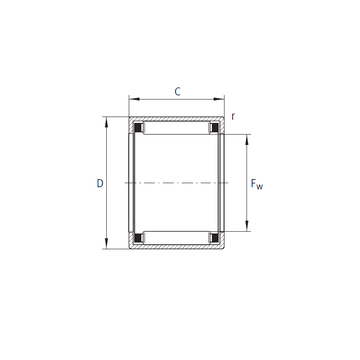 SCE5612 INA Needle Roller Bearings
SCE5612 INA Needle Roller Bearings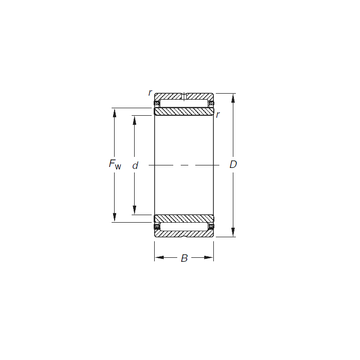 NKJ20/16 Timken Needle Roller Bearings
NKJ20/16 Timken Needle Roller Bearings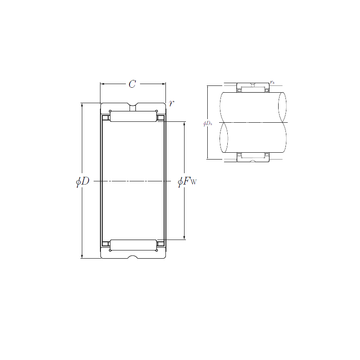 RNA4976 NTN Needle Roller Bearings
RNA4976 NTN Needle Roller Bearings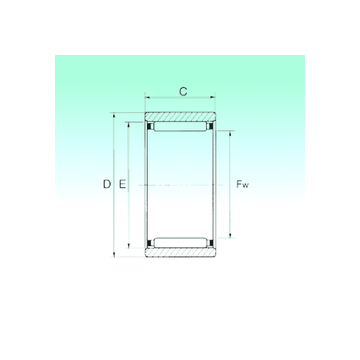 RNAO 35x47x16 NBS Needle Roller Bearings
RNAO 35x47x16 NBS Needle Roller Bearings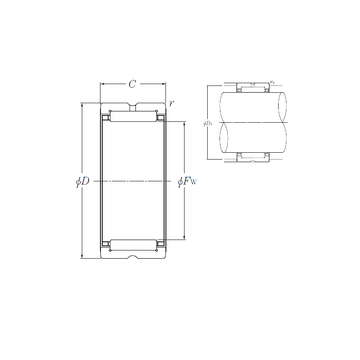 NK42/20R NTN Needle Roller Bearings
NK42/20R NTN Needle Roller Bearings